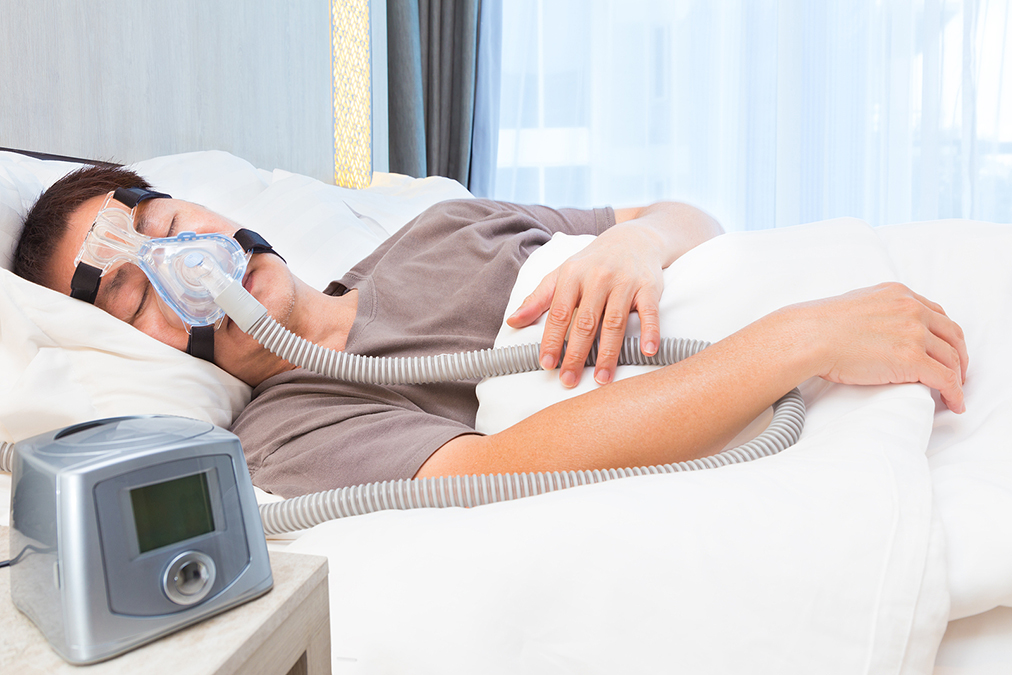 Obstructive Sleep Apnea (OSA) is most often blamed on being overweight and obese.
Obstructive Sleep Apnea (OSA) is most often blamed on being overweight and obese.
But according to a new study in the journal Healthcare, it’s a little more complicated than that.
Because different age groups have different underlying causes of their OSA.
Utilizing data from the Eighth Korea National Health and Nutrition Examination Survey 2021, the study included a substantial sample of 3,942 participants, divided into 2,397 middle-aged (40–64 years) and 1,545 elderly (65 years or older) individuals.
The researchers employed the STOP-Bang tool, a widely recognized method for assessing OSA risk, which considers factors like snoring, fatigue, observed cessations of breathing, high blood pressure, body mass index, age, neck circumference, and sex.
Participants were categorized into either an OSA low-risk group (answering “yes” to fewer than three questions) or a moderate-high-risk group (answering “yes” to three or more questions).
Through a series of other questionnaires, they identified the factors that could potentially influence whether their subjects had a low or high OSA risk. Significantly, they unearthed distinct factors associated with OSA risk in different age groups.
For middle-aged individuals, factors like household size, smoking habits, subjective health, and body image perception played a crucial role.
Those in two-member households had a one-and-a-half times higher probability of OSA compared to those in larger households. Furthermore, non-smokers were 30% less likely to have OSA than smokers, and those perceiving themselves as healthy had a 60% lower risk than those who felt unhealthy.
In contrast, among the elderly, smoking and subjective health status were significantly linked to OSA. Elderly non-smokers had a 23% lower risk of OSA compared to smokers, and those considering themselves healthy were 30% less likely to have OSA than their unhealthy counterparts.
Among individuals in both age categories, those with a moderate to high likelihood of developing OSA were more commonly found in households with two members, often had longer working hours, and exhibited higher rates of smoking and binge drinking, compared to those with a lower risk of developing OSA.
The study also highlighted important lifestyle and psychological factors.
Middle-aged participants at higher risk of OSA tended to spend more time sitting, and had higher rates of obesity, stress, and suicidal ideation, compared to those at low risk.
The presence of chronic conditions like diabetes, heart attack, and stroke was more common in individuals at higher risk for OSA across both age groups.
The findings underscore the need for age-specific interventions.
For middle-aged individuals, strategies might focus on promoting active lifestyles, addressing smoking and drinking habits, encouraging a positive self-perception of health and body image, and promoting relaxation.
For the elderly, interventions might be more effective if they primarily target smoking cessation and foster general good health.

 Overcoming IBD
Overcoming IBD Multiple Sclerosis
Multiple Sclerosis Banishing Bronchitis
Banishing Bronchitis Gum Disease Gone
Gum Disease Gone Overcoming Onychomycosis
Overcoming Onychomycosis Neuropathy No More
Neuropathy No More The Prostate Protocol
The Prostate Protocol Brain Booster
Brain Booster
 Ironbound
Ironbound
 Solution for Shingles
Solution for Shingles
 The Bone Density Solution
The Bone Density Solution
 The Ultimate Healing Protocol
The Ultimate Healing Protocol
 The Parkinson's Protocol
The Parkinson's Protocol
 The Chronic Kidney Disease Solution
The Chronic Kidney Disease Solution
 Overthrowing Anxiety
Overthrowing Anxiety The Fatty Liver Solution
The Fatty Liver Solution The Hypothyroidism Solution
The Hypothyroidism Solution
 The End of Gout
The End of Gout The Blood Pressure Program
The Blood Pressure Program
 The Oxigized Cholesterol Strategy
The Oxigized Cholesterol Strategy
 Stop Snoring And Sleep Apnea Program
Stop Snoring And Sleep Apnea Program
 The Arthritis Strategy
The Arthritis Strategy The Vertigo & Dizziness Program
The Vertigo & Dizziness Program The 3-Step Diabetes Strategy
The 3-Step Diabetes Strategy Hemorrhoids Healing Protocol
Hemorrhoids Healing Protocol The Erectile Dysfunction Master
The Erectile Dysfunction Master Weight Loss Breeze
Weight Loss Breeze The IBS Program
The IBS Program The Insomnia Program
The Insomnia Program The Migraine and Headache Program
The Migraine and Headache Program The Neck Pain Solution
The Neck Pain Solution The Menopause Solution
The Menopause Solution The Ejaculation Master
The Ejaculation Master The TMJ Solution
The TMJ Solution The Acid Reflux Solution
The Acid Reflux Solution The Fibromyalgia Solution
The Fibromyalgia Solution The Psoriasis Strategy
The Psoriasis Strategy